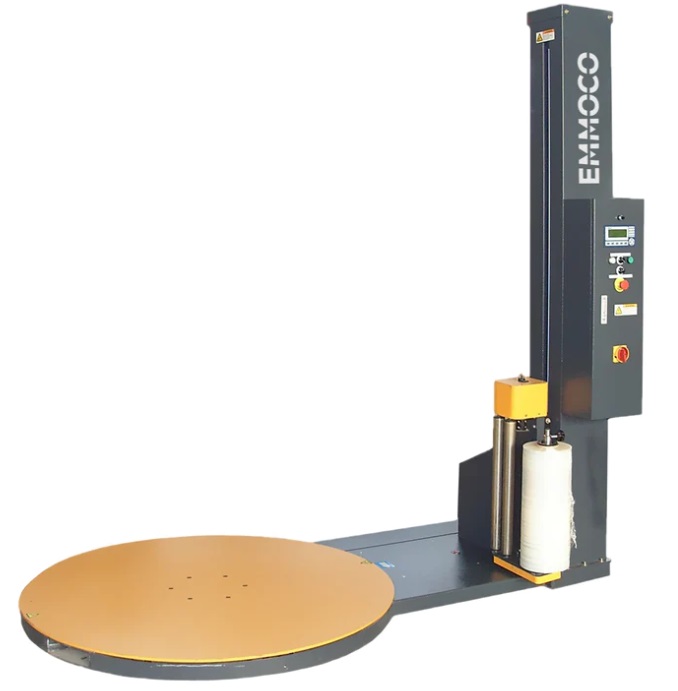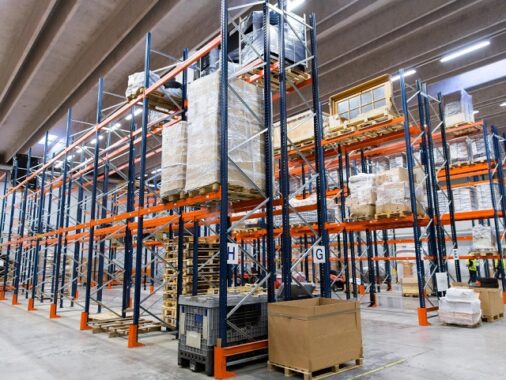When it comes to optimizing the packaging process for palletized goods, pallet wrapping machines play a pivotal role. These machines automate the task of wrapping pallets with stretch film, significantly reducing the time and effort required compared to manual methods. In this article, we will explore the benefits of pallet wrapping machines and how they can revolutionize your packaging operations.
Why Invest in Pallet Wrapping Machines?
Pallet wrapping machines offer numerous advantages over traditional manual wrapping methods. Let’s delve into the key reasons why businesses should consider investing in these machines:
1. Improved Efficiency and Time Savings
By automating the pallet wrapping process, these machines drastically increase efficiency and save valuable time. With the ability to wrap multiple pallets per hour, pallet wrapping machines allow your employees to focus on other essential tasks, leading to improved productivity and throughput.
2. Consistent and Secure Wrapping
Achieving a consistent and secure wrap is crucial for the stability and protection of palletized goods during storage and transportation. Pallet wrapping machines ensure uniform tension and film application, minimizing the risk of product damage or pallet instability. Say goodbye to loose or over-tightened wraps!
3. Labor Cost Reduction
Manual pallet wrapping is labor-intensive and can lead to fatigue and injuries among workers. Investing in pallet wrapping machines can help reduce labor costs by eliminating the need for dedicated personnel for this repetitive task. Your employees can be allocated to more value-added operations, contributing to higher overall efficiency.
4. Film Savings and Waste Reduction
Stretch film is a vital component of pallet wrapping, but its excessive use can lead to unnecessary costs and environmental waste. Pallet wrapping machines optimize film consumption by applying the ideal amount required for a secure wrap. This not only reduces expenses but also minimizes the ecological impact of excess film.
5. Versatility and Adaptability
Pallet wrapping machines cater to a wide range of pallet sizes, weights, and shapes. They can be easily adjusted to accommodate different wrapping requirements, allowing for flexibility in your packaging processes. Whether you handle uniform or irregular loads, these machines can adapt to your needs.
How Do Pallet Wrapping Machines Work?
Pallet wrapping machines employ various mechanisms to automate the wrapping process. The most common types include:
1. Turntable Machines
Turntable machines consist of a rotating platform where the pallet is placed. The machine rotates the pallet while a film dispenser moves up and down, wrapping the load from top to bottom. These machines are suitable for low to medium wrapping volumes and are easy to operate.
2. Rotary Arm Machines
Rotary arm machines keep the pallet stationary while an overhead rotating arm wraps the film around the load. This type of machine is ideal for high-speed wrapping operations and is commonly used in industries with heavy loads or unstable products.
3. Ring Machines
Ring machines feature a ring or frame that moves around the stationary pallet, applying the film as it moves. This configuration allows for continuous wrapping without the need to rotate the pallet. Ring machines are preferred for high-speed operations and environments with limited space.
FAQs about Pallet Wrapping Machines
Here are some frequently asked questions about pallet wrapping machines:
1. What types of stretch film can be used with pallet wrapping machines?
Pallet wrapping machines are compatible with various types of stretch films, including cast, blown, and pre-stretched films. Each type offers specific advantages depending on your packaging requirements and load characteristics.
2. How do pallet wrapping machines ensure load stability?
Pallet wrapping machines utilize adjustable tension controls and film application settings to ensure load stability. These machines can apply the appropriate amount of tension to achieve a secure wrap while avoiding unnecessary compression or damage to the products.
3. Can pallet wrapping machines accommodate different pallet sizes?
Yes, pallet wrapping machines are designed to accommodate a wide range of pallet sizes. They typically feature adjustable settings to adapt to various load dimensions and heights. However, it is essential to verify the machine’s specifications to ensure compatibility with your specific pallet sizes.
4. Are pallet wrapping machines easy to maintain?
Yes, pallet wrapping machines generally require minimal maintenance. Regular cleaning and periodic inspections are recommended to ensure optimal performance. Manufacturers usually provide detailed maintenance instructions and guidelines for their machines.
5. Can pallet wrapping machines integrate with existing packaging lines?
Certainly! Pallet wrapping machines can be seamlessly integrated into existing packaging lines. Manufacturers offer a range of options and configurations to facilitate integration, such as conveyors, automatic film cutters, and pre-stretch units.
6. What safety features should I look for in pallet wrapping machines?
When choosing a pallet wrapping machine, it is essential to consider safety features such as emergency stop buttons, safety barriers, and user-friendly control panels. Additionally, some machines include sensors to detect obstacles or malfunctions, ensuring a safe working environment.
Conclusion
Pallet wrapping machines are an indispensable asset for businesses seeking to optimize their packaging processes. By investing in these machines, you can enhance efficiency, reduce labor costs, and achieve consistent and secure wraps. Additionally, pallet wrapping machines contribute to film savings and waste reduction, promoting environmental sustainability. Whether you choose turntable machines, rotary arm machines, or ring machines, the benefits of automating the pallet wrapping process are undeniable.





